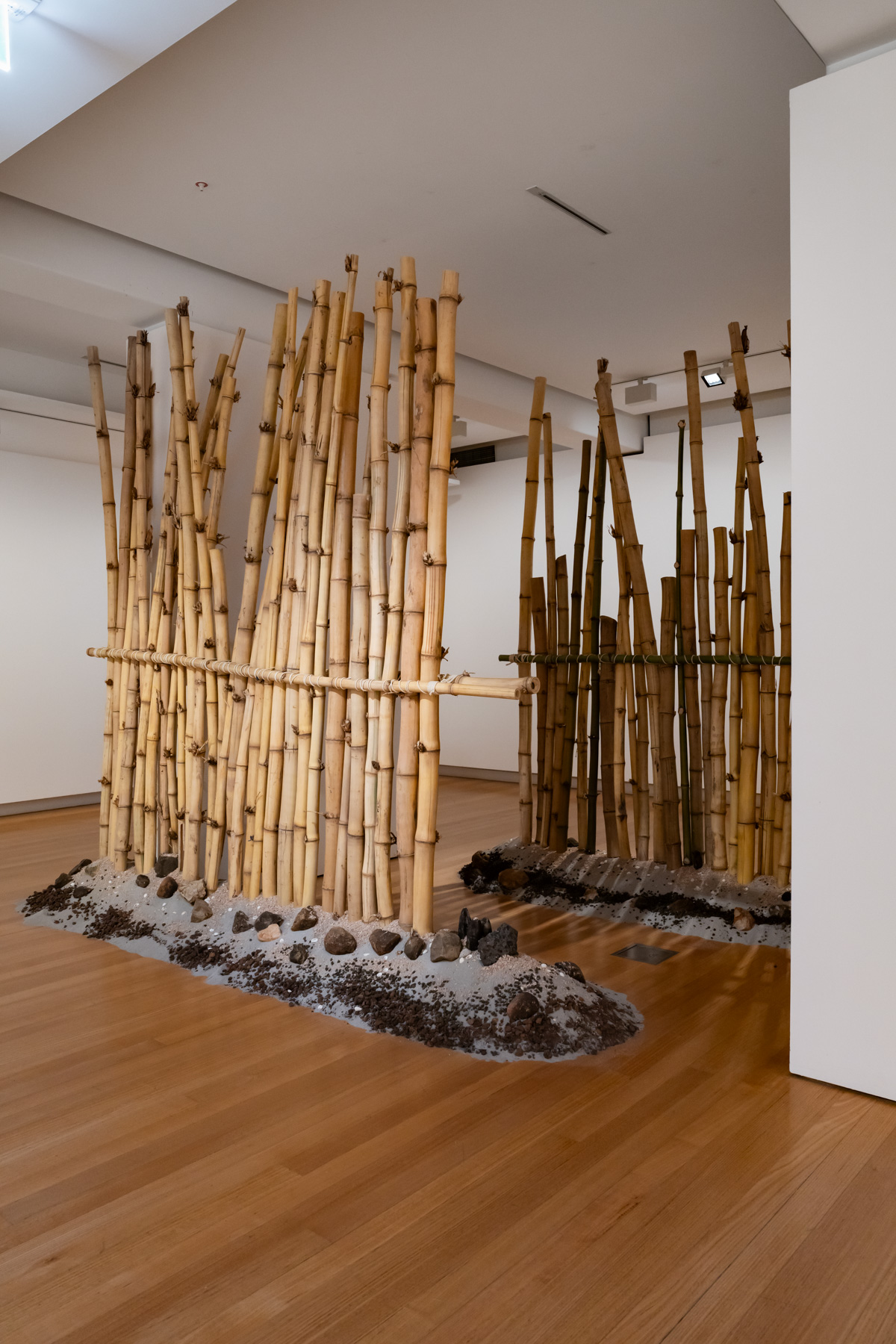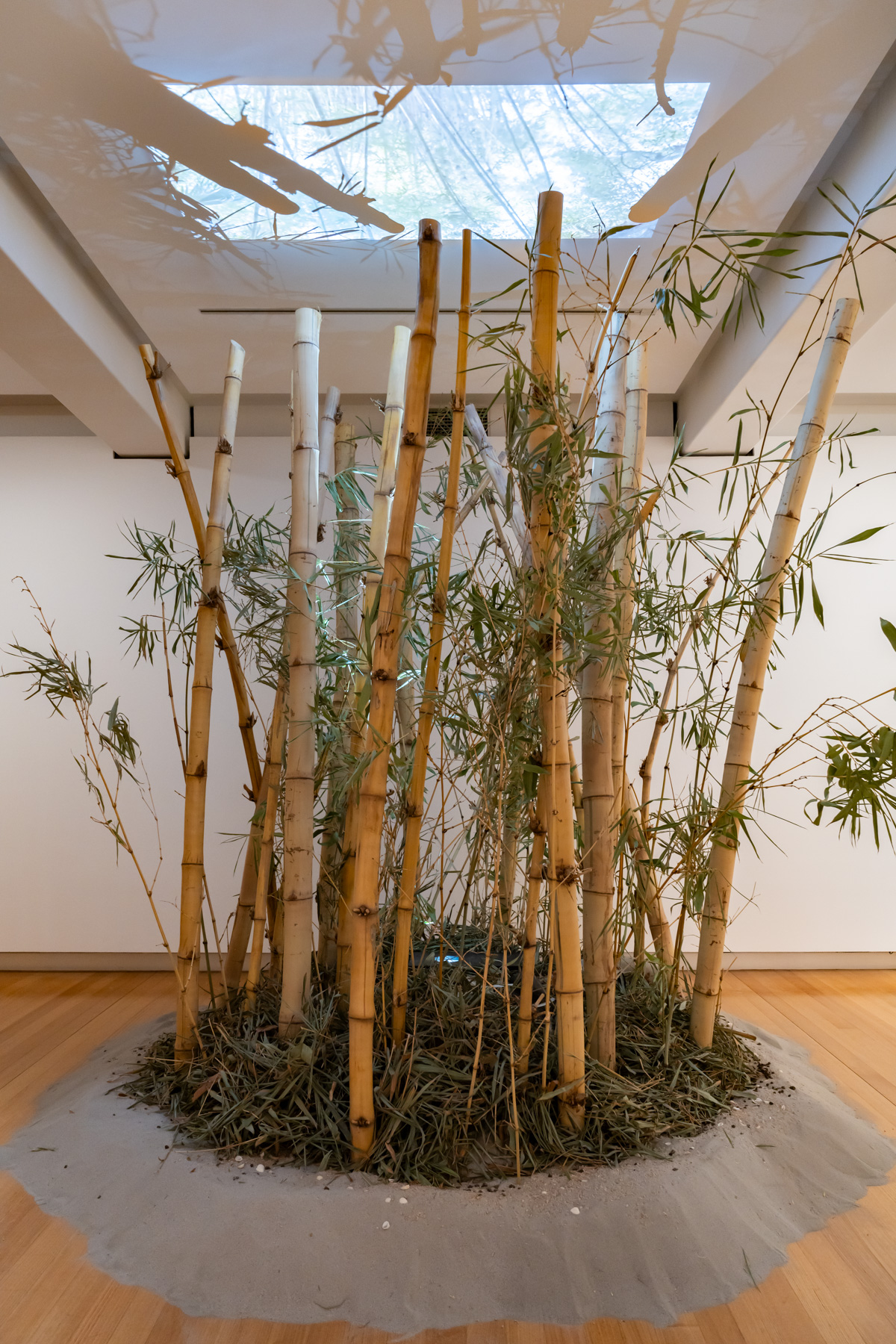

Images: Gail MABO (Piadram clan from Mer Island, Torres Strait Islands) Ma'rap Sau (installation view) 2023, bamboo, clay, concrete. Courtesy of the artist. Photo by Louis Lim.
This work is comprised of bamboo, clay, concrete, shell, sand and volcanic rock and measures 2.76 metres tall by 6.7 metres wide and a depth of approximately 5.2 metres. It is an installation work with variable dimensions.
Working from left to right, on the far left are two bamboo fences positioned parallel to one another providing a narrow passageway between each to the back wall of the Art Museum. The fencing stands upright upon a mound of dark grey sand which is scattered with small white- and cream-coloured shells and dark brown volcanic gravel pebbles and larger volcanic rock stones. This organic material and mound of sand is repeated at the base of the fence at the rear and the front of the bamboo fences found here.
On the right, in the centre of the space is a bamboo grove, again positioned on a raised mound of sand, shell and rock, but in this instance the grove includes thick trunks of bamboo alongside thinner branches and bamboo twigs sprouting long narrow, pale green pointed bamboo leaves. The base of the grove is covered in a large pile of these same green bamboo leaves, heaped together and nestling three concrete sculptures, symbols of significance to the artist, that are found within. On the left-hand side is a concrete sculpture of a fish lying flat on its side, towards the middle and on the right hand side sits a concrete sculpture of a woman, referred to by the artist as a goddess, sitting cross legged in reflection and surrounded by white and black feathers and finally on the far right hand side a concrete sculpture of a dugong or sea cow facing out from the centre of the grove. Within the middle of the mass of leaves sits a black box enclosing a data projector which projects a moving image onto the ceiling of the Art Museum. The image projected is of an established bamboo grove, the tops of its branches moving back and forth in a strong wind. No sound accompanies the image.
Bamboo is strongly linked to and has an enduring presence in Mabo’s traditional knowledge, personal history and arts practice. When Eddie Koiki Mabo (Gail’s father) was working as the gardener at James Cook University in Townsville between 1969 and 1975, he planted bamboo suckers on the cleared banks of the seasonal creek that runs through the campus site. Those suckers have, over time, grown into a large grove that still stands on the banks of Wadda Mooli Creek on what is now known as the JCU Townsville, Bebegu Yumba campus. Mabo regularly accesses this bamboo clump for her large-scale artworks.
Through Ma’rap Sau Gail Mabo creates an opportunity for us to be transported to Mer. She warmly invites us to experience, for a time, her historical, cultural, and environmental space.
The original installation of this work was headed by Ashley Perry, Goenpul artist and emerging curator from Quandamooka Country/Stradbroke Island, Queensland.

